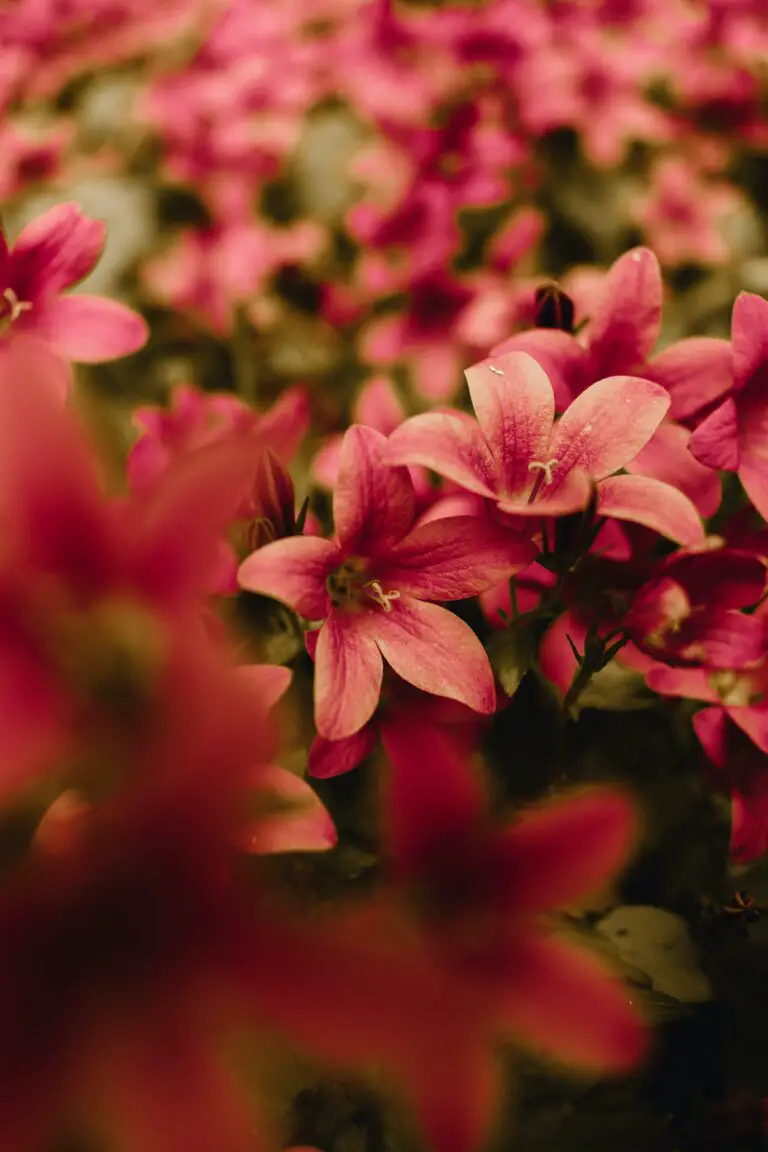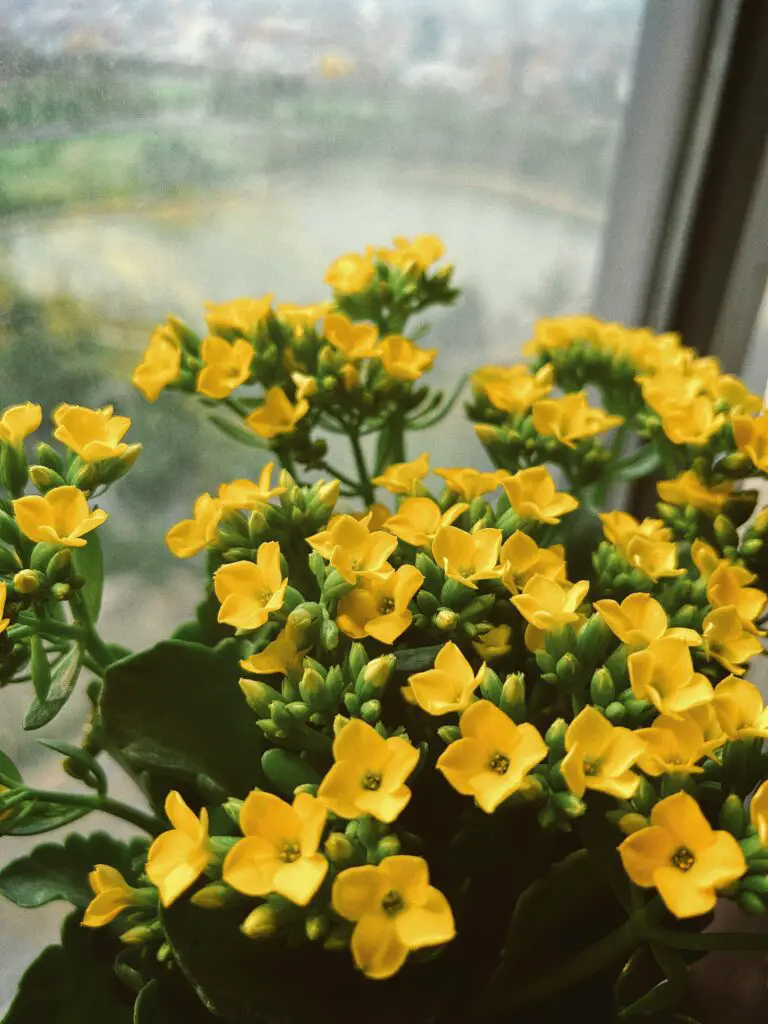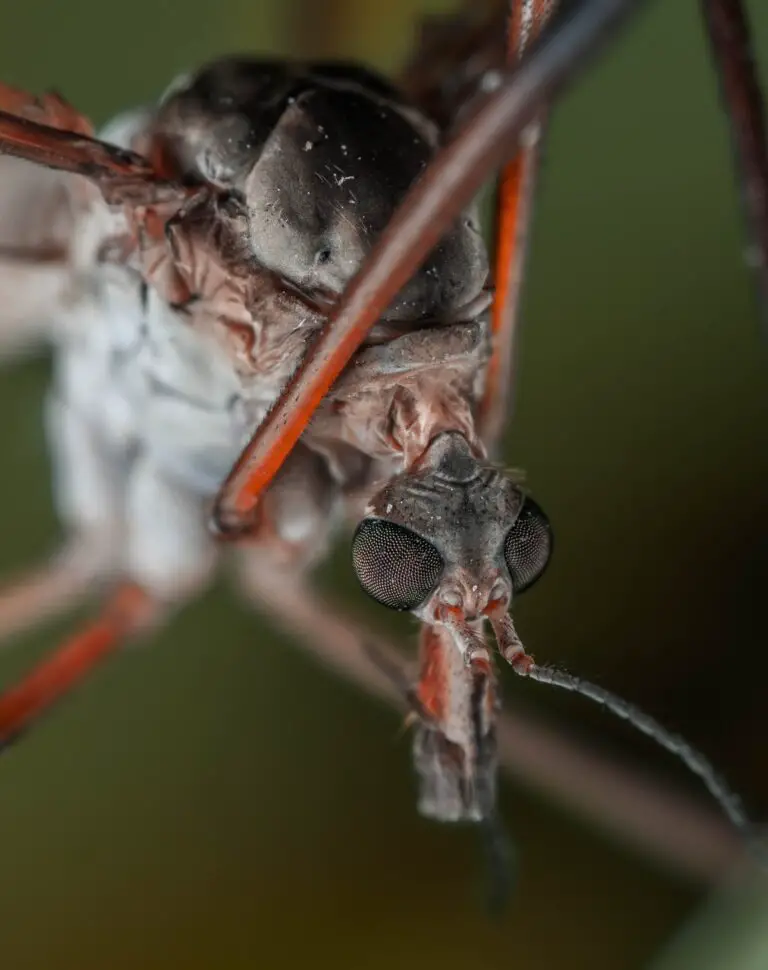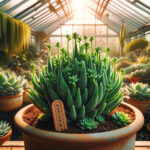The Enchanting World of Kalanchoe Luciae
Imagine a succulent that captures the very essence of nature’s resilience and beauty—Kalanchoe Luciae is that plant. Native to the rocky landscapes of South Africa, this succulent has waltzed its way into the hearts of plant enthusiasts all over the world. With its thick, paddle-like leaves that glow with a palette of rosy pinks and fresh greens, it’s easy to see why it’s become a celebrated addition to any plant collection.
Often mistaken for its close relative, Kalanchoe Thyrsiflora, the Kalanchoe Luciae stands out. It’s not just a plant; it’s a statement piece that commands attention whether perched on a sunny windowsill or nestled among rocks in a garden. Adaptability is its forte—thriving with minimal care, this succulent is a perfect match for the beginner gardener or the seasoned botanist looking for a low-maintenance companion.

Step into any plant lover’s sanctuary, and you’ll likely find the Kalanchoe Luciae basking in its own glory. Its popularity doesn’t just stem from its striking appearance; this plant is a paragon of resilience, with an ability to endure periods of drought and bounce back from neglect with ease. As a testament to its adaptability, the Kalanchoe Luciae thrives in various conditions, from the partial shade to the full, unyielding sun.
Let’s not forget the remarkable color transformation that takes place as the seasons change. The cooler months coax out a flush of fiery red along the edges of its leaves, a spectacular show of color that provides a stunning contrast against its green center. It’s like watching an artist’s brush stroke across the plant, highlighting its edges with a vibrant hue—a delightful display for anyone lucky enough to witness.
Every glimpse of Kalanchoe Luciae reinforces its reputation as an emblem of succulent splendor. Whether it’s the way the sunlight plays off its waxy coating or the silent yet profound way it breathes life into its surroundings, this plant is a true marvel in the plant kingdom. Succulent enthusiasts trek through countless nurseries and greenhouses, hoping to add this gem to their collections, and once attained, it becomes much more than just a part of their flora—it becomes a source of daily inspiration.
Paddle Plant Perfection: Identifying Kalanchoe Luciae
Spotting the radiant Kalanchoe Luciae, often referred to as the Paddle Plant, amidst a sea of succulents is akin to witnessing a masterpiece in nature’s gallery. The sturdy rosettes of the Paddle Plant, boasting a range of hues from green to ruby-red, are a testament to their sun-soaking habits. Seasoned gardeners and enthusiastic novices alike marvel at its margarita glass-shaped leaves – a distinctive trait that makes identification a breeze.
But the real show begins as the Paddle Plant matures. Like an artist’s brushstroke, the leaves’ edges are painted with a bright red or pink, giving off a fiery glow when backlit by the sun—a spectacle that’s both mesmerizing and unforgettable. But don’t be fooled; this is no delicate blossom. Kalanchoe Luciae is a symbol of resilience, thriving with minimal fuss in dry, rocky terrains and charming home gardens.
As blooms make their rare and celebrated appearance, the Paddle Plant offers a gentle nod to its native Madagascar roots with clusters of tubular yellow-green flowers that rise high above the foliage. These blooms are a siren call to pollinators, ensuring the continued splendor of this succulent’s lineage. Yet, even without its infrequent blooms, the Paddle Plant commands attention, earning its pride of place in succulent collections.
Its growth habits tell a story of adaptation and survival – the fleshy leaves designed to hoard water for drought days, while its spreading nature whispers of a desire to dominate the landscape. As you encounter this succulent, remember, it’s more than just a pretty face—the Paddle Plant is a living emblem of evolution’s ingenuity.
Witnessing Kalanchoe Luciae’s stunning attributes for the first time, you may find yourself drawn into a living tapestry of shape and color that feels almost sculpted by a botanical artisan. It’s an encounter that leaves an indelible impression, one that redefines the very essence of succulent splendor.
Cultivating Your Kalanchoe: Tips and Tricks for a Thriving Plant
Who doesn’t love a touch of green that thrives on minimal fuss? Meet Kalanchoe Luciae, a plant that’s not just a pretty face but a stoic survivor in the world of succulents. Let’s embark on a journey to ensure your Kalanchoe doesn’t just survive but flourishes!
Imagine your Kalanchoe basking in the sunlight, just like it would in its natural habitat. Give it a spot where the sun plays peekaboo—enough light to keep it beaming but shielded from the harsh midday sun. A little tan on its leaves is great, but we don’t want a sunburnt succulent, do we?

Watering your Kalanchoe is like walking a tightrope—it craves balance. The ‘soak and dry’ method is your best bet; water thoroughly, then hold off until the land of the thirsty (your pot) is parched. This game of hydration keeps roots eager yet avoids the dreaded root rot. Winter is a snooze period for your green buddy, so let your watering can hibernate a bit too.
The perfect temperature for your Kalanchoe is one that mimics a mild spring day. It’s a child of warmth and doesn’t take kindly to frosty shoulders. Keep it cozy between 60°F (15°C) and 85°F (29°C), away from drafts that whisper of winter.
Let’s talk about moving in together—potting, I mean. The right soil sets the stage for success. Mix it up with cactus potting mix and sand or perlite for drainage that’s swift and sure. Remember, a happy plant is a well-drained plant.
What’s the real secret sauce to a thriving Kalanchoe Luciae? A dash of tough love! It’s a plant that will rise to the occasion when given the challenge to grow with just the right care and a sprinkle of neglect. Find the balance, and watch your Kalanchoe Luciae transform into a succulent spectacle of splendor!
For those ready to deepen their succulent expertise, why not explore the vast and varied world of these resilient plants? Learn more about different succulent types and discover how each unique species thrives.
Nurturing Nature’s Novelty: Soil and Fertilization for Kalanchoe
When it comes to the vibrant Kalanchoe luciae, the adage “as above, so below” couldn’t ring truer. The key to that Instagram-worthy foliage? It’s all happening beneath the surface. The soil mix and fertilization you provide are the unsung heroes, the backstage crew that set the stage for a show-stopping performance.
Picture this: a bespoke blend of soil that’s just airy enough to let Kalanchoe’s roots breathe, yet dense enough to hold onto the essential nutrients. What’s the secret recipe? We’re talking a mix of coarse sand or perlite, peat, and the all-important loamy soil. This trio creates the perfect soil structure—a crumbly, well-draining mix that helps prevent waterlogged roots, fending off the dreaded rot.

Now, let’s not forget about the power couple of plant nutrition: N-P-K, short for nitrogen, phosphorus, and potassium. These are the marquee names in the fertilization game. For your Kalanchoe luciae, a balanced, water-soluble fertilizer becomes the gourmet meal it can’t resist. Administer this during the growing season, and you’ll witness a transformation that rivals the most riveting of makeovers.
Detour Alert: Over-Fertilization
Beware the zeal of the over-eager gardener! It’s a tale as old as time—overzealous fertilization leading to nutrient burn. So, like a skilled chef, it’s all about moderation. Stick to the guidelines, and your Kalanchoe will reward you with growth that’s as healthy as it is lush.
Remember, your Kalanchoe luciae is more than just a pretty face—it’s a living sculpture carved by your care. Provide the right soil mix and the judicious use of fertilizer, and you’ll be the architect of its splendor, watching it thrive with strong roots and vibrant foliage.
Propagation Prognosis: Proliferating Your Paddle Plant
Ever gazed at your Kalanchoe Luciae, also known as the Paddle Plant, and wished you could spread its stunning beauty around? You’re in luck! Propagating this succulent splendor is a satisfying venture—and it’s more straightforward than you think. Let’s dive into the delightful world of multiplying your cherished Kalanchoe.
What you need is patience, precision, and a penchant for experimentation. Whether you’re a seasoned gardener or taking your first step into the propagation arena, our step-by-step guide on using leaf cuttings, offsets, and seeds will set you up for success. And with a few nuggets of wisdom, we’ll help you maximize those success rates!

The Leafy Launch: Propagating Through Leaf Cuttings
Starting with leaf cuttings is a game of gentleness. Choose a healthy, full-grown leaf and twist it from the stem. Be careful—it should come away clean, without tearing. Let it callous over for a few days and then lay it atop well-draining soil. In time, tiny Paddle Plant protégés will sprout from the edges, like magic unfolding before your eyes.
Offset Odyssey: Division for Duplication
Your Kalanchoe Luciae may reward you with little clones, known as offsets, sprouting at its base. These babies are nature’s gift, prepped and primed for separation. Wait until they’re a good size, then with a sterilized knife, sever them from the mother plant. A new pot, some soil, and presto—you’ll have a mini-me of your mother plant!
The Seed Sojourn: A Slow but Steady Triumph
Growth from seeds is a testament to the virtue of patience. Scatter the minuscule seeds over sandy soil and keep a vigilant eye on humidity and temperature. It’s a slower journey, but the reward of raising a Paddle Plant from the very genesis of germination is nothing short of gratifying.
Remember these tips for a flourishing foray into propagation: succulent soil, indirect sunlight, and judicious watering. With these steps, you’ll transform your single Kalanchoe Luciae into an empire of succulent splendor, each one a living testament to your nurturing hand. So go ahead—propagate with passion and watch your green kingdom grow!
Interrogating The Irritants: Managing Pests and Diseases
Imagine this: your beloved Kalanchoe Luciae, once a statuesque example of succulent splendor, has started to look a little lackluster. The culprit? Unwanted guests—and not the kind who overstay their welcome at dinner parties. Pests and diseases can turn your robust Kalanchoe into a sickly sight, but fear not! With some plant detective work, we can nip these nuisances in the bud.
Battling the Bugs: Aphids and mealybugs love to feast on the sap of your Kalanchoe Luciae. These tiny vampires leave behind telltale signs—misshapen leaves, stunted growth, and a sooty mold from their sugary secretions known as honeydew. Don’t let these pests throw a party at your plant’s expense. A strong blast of water or insecticidal soap can send them packing. Remember, it’s like a mini shower for your succulent’s leaves, washing away those unwanted pests!

Fungal Foes: Next up are fungal diseases such as powdery mildew—appearing like a dusting of flour on leaf surfaces. It thrives in warm, humid conditions, much like your sweat does on a hot day. Air circulation is your friend here; by simply repositioning your plant or employing a fan, you can make conditions less favorable for this floral affliction.
And don’t forget rust; it’s not just for metal. When small orange or brown spots pepper your Kalanchoe’s leaves, it’s time for action. Pluck those spotted leaves like you’re picking out the less-than-perfect apples from the bunch and improve air flow around your plant. Sometimes, a copper-based fungicide is the superhero that comes to the rescue. Think of it as arming your Kalanchoe with a shield against invaders.
Rot and Wither: Root rot can be a silent killer. Over-watering is often the root cause—pun intended. Ensuring good drainage mimics the natural arid habitat of the Kalanchoe Luciae. Remember, these succulents don’t need a daily drink. It’s like overindulging in water for them, and no one likes soggy feet, right?
Lastly, keep an eye out for bacterial wilt, the plant equivalent of a bad cold that refuses to let go. Infected plants wilt dramatically as if going through a midlife crisis. There may be no coming back from this one, but the best prevention is keeping tools clean and avoiding water on the leaves. A stitch in time saves nine—a bit of attentiveness can save your Kalanchoe Luciae from turning into plant purgatory.
By understanding and respecting the specific needs of our plump-leaved friends, we can guard them against the tiny terrors that threaten their well-being. Keep a watchful eye, ready your defensive strategies, and your Kalanchoe Luciae will continue to bask in all its succulent splendor. Now, isn’t that a little bit of plant peace of mind?
The Designer’s Palette: Kalanchoe Luciae in Landscape and Decor
Imagine stepping into a garden where the vivid hues of succulents play with the light, creating a living tapestry that dazzles the senses. This is the magic that Kalanchoe Luciae, a veritable artist’s muse, brings to landscape and interior design. Its rich, red-tinged leaves, resembling large open palms, beckon designers and plant enthusiasts alike to explore its potential as both a standalone feature and a complementary plant in various settings.
Drawing inspiration from real-life applications, let’s take a stroll through spaces where the transformative power of Kalanchoe Luciae takes center stage. Picture an urban rooftop garden, where amidst the harsh lines of cityscape, these succulents offer a serene green oasis. The fleshy leaves, with their arresting geometric patterns, introduce an element of the wild and exotic, softening the man-made environment.

In terrariums, the sculptural form of Kalanchoe Luciae becomes a microcosm of the desert’s beauty. When paired with a medley of sand, rocks, and other arid-loving plants, it creates a whimsical, low-maintenance landscape. Each terrarium is a unique world unto itself, with the kalanchoe as the star, captivating onlookers with its elegant simplicity.
Indoor decor also benefits from the inclusion of Kalanchoe Luciae. Whether it’s set upon a sunny windowsill or nestled among a collection of indoor plants, its upright growth and sunset-colored leaves infuse warmth and vitality. By placing these plants in contemporary containers—think concrete planters or sleek metallic pots—the kalanchoe transcends its role as mere greenery to become a living sculpture, one that complements modern and minimalist aesthetics effortlessly.
So, whether you’re aspiring to elevate a garden into a conversation piece, transform a mundane office with a touch of the outdoors, or curate a unique desert vista within glass walls, Kalanchoe Luciae offers endless possibilities. It’s more than just a plant; it’s a stroke of design genius that enlivens any space with its succulent splendor.
Conservation and Concerns: Ethical Kalanchoe Cultivation
When we delve into the realm of Kalanchoe Luciae, a stunning succulent known for its sculptural beauty, it’s crucial to address the topic of sustainable cultivation. This is not just about maintaining an aesthetically pleasing collection, but also about preserving the delicate balance of our ecosystem. In this section, let’s have an engaging discussion about the responsible ways we can ensure this succulent thrives, both in our homes and in the wild.
Imagine walking through a local garden center, you’re immediately drawn to the vibrant paddle-shaped leaves of the Kalanchoe Luciae, basking in the sun. Now, think about where these plants originated. Are they grown in a way that supports ecological sustainability? It’s a vital question, and here’s why: The ethical cultivation of Kalanchoe Luciae isn’t just a niche concern; it’s about our responsibility towards bio-diversity and ecological integrity.
Embracing Sustainable Growing Techniques
Gardening enthusiasts and commercial growers alike are now embracing sustainable farming practices for Kalanchoe Luciae. This includes using organic soil amendments, natural pest controls, and water conservation methods. Our succulent should not come at the cost of harming the environment. For instance, using collected rainwater for irrigation not only saves water but also provides a more natural water source for our plants. These small steps collectively make a significant impact on our environment.
The Ripple Effect of Responsible Trade
It’s not just about how we grow, but also how we trade. The demand for exotic plants like Kalanchoe Luciae can inadvertently fuel unethical trade practices, leading to overharvesting and habitat destruction. Instead, responsible trading involves ensuring that plants are legally sourced and propagated without disrupting their natural habitats. It’s similar to choosing fair-trade coffee; it’s about making choices that benefit our planet and its inhabitants.
As we continue to explore and enjoy the splendor of Kalanchoe Luciae, let’s commit to ethical cultivation. From professional nurseries to our backyard gardens, every choice to embrace sustainability is a step toward conserving the incredible diversity of our planet. Let’s enjoy the beauty of our succulents without compromise, knowing that we are contributing to a greener, more sustainable world.
Frequently Asked Questions
Welcome to the succulent symposium, where we dive into your burning inquiries about the radiant Kalanchoe Luciae, a plant that turns heads with its pancake-shaped leaves and bustling palette of color. Let’s get leafy with some real talk on these desert darlings!
What’s the secret to a thriving Kalanchoe Luciae?
Captivating Kalanchoe Luciae requires a play of sun and shade – think of it sauntering in the morning sun, then lounging in dappled afternoon shade. It’s this gentle balance that induces those brilliant red hues along its edges, much like a blush set off by the sun’s soft kiss.
Can I coax my Kalanchoe to bloom?
Imagine this: each winter, your home could host a spectacular display as your Kalanchoe unfurls a tower of blossoms. To entice this show, it’s about giving the plant a chill vibe. Cue the cooler temperatures and shorter days, and voilà! You might just witness the floral fireworks display of the year.
Why are my plant’s leaves turning yellow?
Picture this: leaves switching from their succulent green to a sallow yellow faster than weekend weather. Nine times out of ten, it’s a watering faux pas. Read your plant’s body language—a droop here might mean thirst, but a squishy feel? That’s overwatering drama. Pare back on that H2O, and you’ll likely see a return to ravishing green.
How often should I repot this succulent stunner?
Consider the repotting routine like refreshing your plant’s living space. Every two to three years should do the trick, aligning with a hot real estate market’s pace. Fresh soil is to your Kalanchoe what a renovated kitchen is to a home: an instant value-boost.
Now, who wouldn’t want a peek at Kalanchoe Luciae in all its living glory? Roll the film for a snippet of succulent success!
Got more questions? Keep them coming! Let’s grow our knowledge about this succulent beauty together. Remember, your Kalanchoe Luciae isn’t just a plant; it’s a conversation piece that continues to fascinate and inspire.



